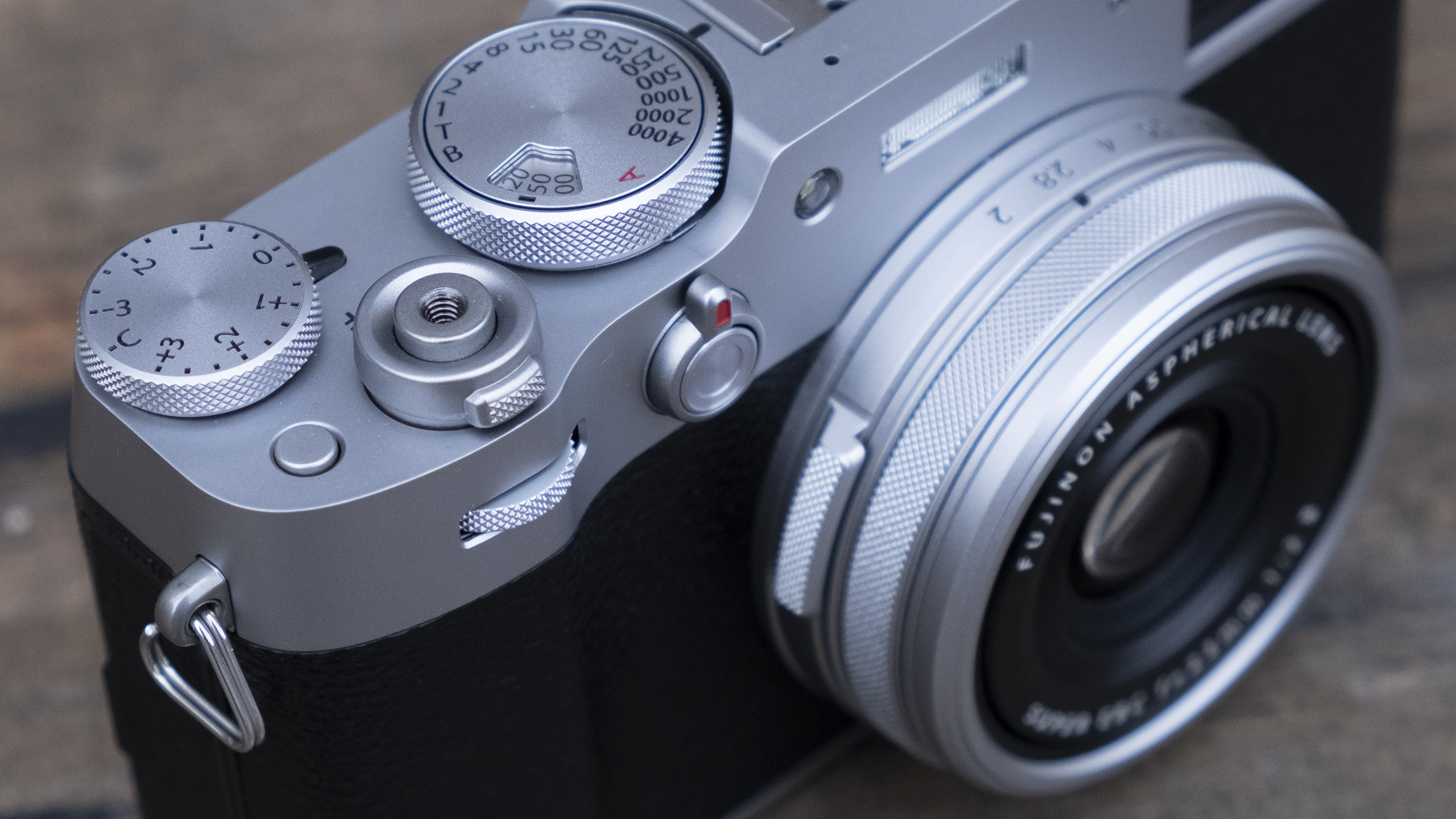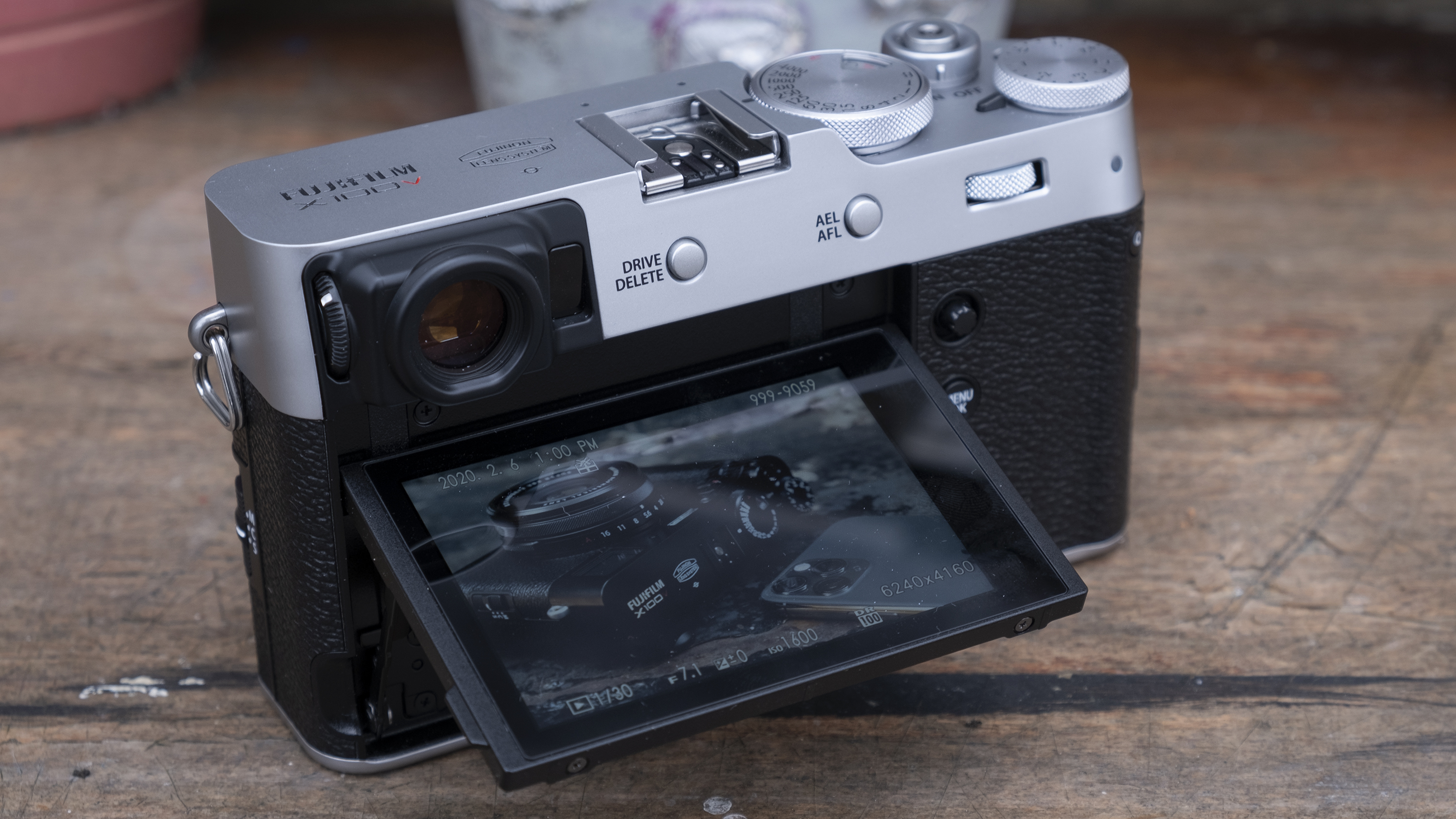
It’s been nearly four years since the launch of the Fujifilm X100V, a unique compact camera with retro style, a sharp sensor and a fixed 23mm lens. It’s still our favorite compact camera, and one of the best travel cameras you can buy. Which only makes the prospect of a follow-up more enticing.
If the rumors are true, Fujifilm is building towards the launch of its successor that will most likely be called the 'X100R'. Better yet, there’s heavy speculation that it’s due in early 2024. But with such special shoes to fill, the real question is what the next instalment in the X100 line-up will look like.
To give you an overview of what might be in store, we’ve gathered together all of the information that’s currently circulating online about the Fujifilm X100R. From release date to features, you’ll find all of the latest X100R news below.
We’ve also given our verdict on which upgrades we think are most likely to make it into production, and what features we’d most like to see.
Fujifilm X100R: Rumored release date and price
The Fujifilm X100V hit shelves at $1399 / £1299 / AU$2,349. Adjusted for inflation, those figures are pretty much equivalent to the launch price of its predecessor, the X100F.
If Fujifilm follows that trend, we could see the rumored X100R retail at $1599 / £1499 / AU$2649. That would put it firmly among the mirrorless mid-range, alongside models like the Nikon Z6 II. That might seem like tough competition for a premium compact, but the enduring popularity of the X100 series – fuelled in part by recent TikTok trends – means Fuji is probably safe to inflate the asking price.

It’s also worth noting that the above pricing is pure speculation, as there’s been no firm word on what the X100R will cost when it potentially launches.
As for a release date, Fujirumors – which has a relatively good track record when it comes to predictions – has reported that the X100R will break cover in “early 2024”. This fits with the last two iterations of the X100: the X100F launched in January 2017, followed by the X100V in February 2020.
When exactly within the first few months of 2024 remains to be seen. So too does the name: while many sources are using X100R as the label (derived from roku, the Japanese word for six), there’s every chance the sixth instalment in the series may go by a different name – such as X100VI.
Fujifilm X100R: Design and build

Two things have always been true of Fuji’s X100 series: the retro-inspired design and the fixed 23mm prime lens. Both are pretty much guaranteed to make a return on the so-called X100R.
The series has always championed premium build quality and excellent physical handling, with plenty of direct-access dials and buttons. That’s unlikely to change with the X100R, particularly given the near-cult status that the X100V now enjoys.
That same camera saw the neat introduction of a tilting touchscreen, without compromising on the established look and feel of the X100 series. The logical evolution of this interface would be a fully articulating touchscreen: given that X100 cameras are tailor-made for shooting from the hip, a vari-angle display would give street photographers even more flexible framing options. The question is whether such a monitor can be integrated without adding bulk.

Another upgrade that’s been posited by some commentators is a switch from magnesium alloy to titanium for the body construction. In reality, this is a luxury rather than a necessity, and one that would only push up the price. We’d rather see the X100R ship with full weather sealing, without the need for a filter around the lens.
Fujirumors has also floated the idea of a “new” lens for the X100R, although it’s unclear what form this might take. We think it’s highly unlikely that Fuji will move away from the established 23mm f/2 format. It’s more realistic to expect the X100R to follow the X100V’s example, refining the internal elements to deliver a sharper shooting experience.
Fujifilm X100R: Sensor and performance
We hailed the X100V as “the best of its kind”, and the X100F as “the perfect enthusiast camera”. The next in line, then, has tough acts to follow when it comes to imaging performance. A safe place to start is with an X100-series staple: a large APS-C sensor.
The X100V used the same 26.1MP X-Trans IV sensor and X-Processor 4 chip as the X-T4. If the X100R were to follow suit and borrow the sensor from the X-T5 (and, by extension, the X-H2), that would mean a significant jump in resolution, to 40.2MP – the highest ever seen in an X100 series camera. This would give the X100R huge cropping potential for such a compact model.
There is an alternative, though. Fuji could keep to the 26MP mark established by the X100V and fit the the X100R with the stacked 26.1MP APS-C sensor from the X-H2S. Combined with the X-Processor 5 (which it’s pretty much certain to feature), this would yield major gains in burst shooting speeds and autofocus performance – although the X100V wasn’t exactly tardy.

We’ve seen stacked sensors in premium compacts before, notably the Sony RX100 VII. But that was a 1-inch number, not an APS-C – so the X100R would be breaking ground. The question mark hangs over cost: the X-H2S sits a solid tier above the X100 series in terms of price, and stacked APS-C sensors don’t usually come cheap. So it could be unrealistic to expect Fuji to squeeze the same tech into the X100R.
Either way, both sensors represent an intriguing possibility. Each would deliver a shooting experience not previously seen in a portable premium compact.
As for video, the X100 series has always been about photography first. So we wouldn’t expect the X100R to have 6K or internal 10-bit 4:2:2 capabilities. That said, we’d still expect to see recording credentials improved for the X100R – particularly in an era when content creation is crucial. Where maximum 4K frame rates topped out at 30fps for the X100V, we think the X100R will shoot footage at a minimum of 60fps.
Fujifilm X100R: Features
Another hallmark of the X100 series is the hybrid viewfinder, which allows you to switch between a traditional optical viewfinder and a modern EVF. It’s a clever party trick that brides the gap between old and new, reflecting the camera’s approach as a whole. Expect to see it return for the X100R, albeit with a few tweaks.
The EVF was already boosted to 3.69-million dots on the X100V, and we doubt this will be increased again for the X100R. Instead, we’d hope to see the EVF magnification improved towards 0.7x, from 0.66x on the X100V.
One feature absent from all X100 series cameras has been in-body image stabilization. Shooting sharp has previously meant relying on the shutter speed/ISO dial, together with the fast aperture of the lens – which didn't stop us from capturing crisp results in previous reviews. The only thing that may change this approach is an increased focus on video, where stabilization becomes more relevant for shooting handheld clips. As yet, there’s no IBIS intelligence to speak of.
An easier prediction is a bigger battery: even with the inherent size constraints, a larger cell would be an instant win – as it was for the X100V. Fujifilm was able to improve battery life in the recent X-S20, from a similar cell to the X-S10.

Film simulation modes are another established feature of the X100 family, and we’d expect to see more preset recipes arrive with the X100R, allowing you to further imitate the look and feel of hallowed 35mm film types.
With the X-Processor 5 inside, the X100R would also benefit from the deep learning autofocus tricks seen in the likes of the Fujifilm X-S20. This would take the new X100 model beyond the face/eye detect AF of the X100V, into a realm of subject-detection that covers animals, vehicles and more.
Together with the improved prediction algorithm also found on the X-S20, this would make it easier to shoot from the hip with the certainty of capturing a sharp subject. It would also be the ultimate reflection of the X100R as a camera that celebrates old and new, putting cutting-edge AI autofocus in a body inspired by the analog era.
Whatever shape the rumored and so-called X100R takes, it's one of the hotly anticipated cameras for 2024.







